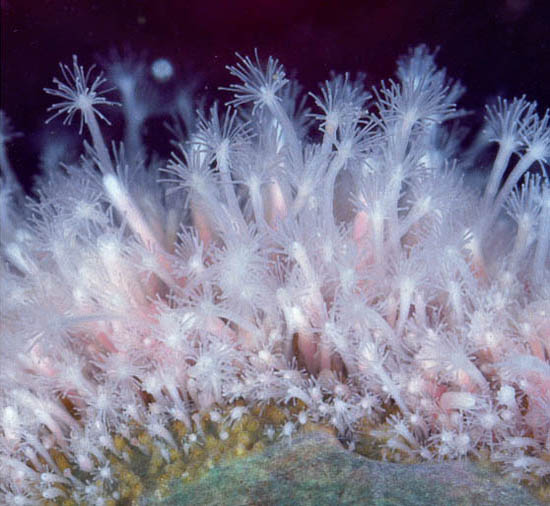Stachelpolyp

> leben auf Einsiedlerkrebsen
> bilden Stacheln
> Kolonien mit Arbeitsteilung
Merkmale Kolonien der Stachelpolypen siedeln vor allem auf Schneckenhäusern, die von Einsiedlerkrebsen bewohnt werden. Sie bilden raue Polster mit einer Bodenplatte, auf der verschiedene Typen von Polypen sowie lange Stacheln wachsen. Vorkommen Von der Dauerflutzone abwärts. Nordsee bis Dänische Belte und Öresund. Wissenswertes Stachelpolypen gehören wie Quallen zu den Nesseltieren und besitzen giftige Nesselkapseln. Sie bilden Kolonien und teilen sich die Arbeit auf: Die Fresspolypen fischen mit Tentakeln Nahrungsteilchen aus dem Wasser. Wehrpolypen tragen Peitschen mit Nesselkapseln, Geschlechtspolypen sorgen für die Fortpflanzung. Stachelpolyp und Einsiedlerkrebs profitieren gleichermaßen von ihrem Zusammenleben (Symbiose). Der Krebs trägt seinen Gast umher und wirbelt dabei Nahrungsteilchen auf. Im Gegenzug schützen ihn seine nesselnden Dachbewohner und vergrößern mit ihrer Bodenplatte seine Behausung.